Plumbing is a love/hate type of thing for me. I enjoy the work, but I hate the situations in which I find myself having to do it. It seems like it’s always cold, dark, wet, and whether it’s under the house or under the sink, it’s always in a cramped area. While at Home Depot awhile back picking up supplies for a kitchen faucet install, I went to get a new basin wrench when I ran across this:
At first glance it appeared to be sort of gimmicky. The unusual design and multi-function theme of the tool really didn’t strike me as anything spectacular. I probably wouldn’t have ever given it a 2nd look had it not have been a Ridgid product. Ridgid has been around nearly a century and their products are as synonymous with plumbing as Nebraska is with corn, so I figured there was at least a chance it was worth my time to give it a good look.
Traditional basin wrenches are awkward to use. I can’t swear that there isn’t a point where you master the use of them, but I can certify that if such a level of skill exists, I have yet to attain it. After a few minutes of looking it over (still skeptical) I decided the $20 price tag wasn’t going to make or break me and decided to give it a shot.
Out of the package I noticed the tool was extremely light weight. Ridgid lists it at .77 lbs and while I did not weigh it to confirm, I don’t doubt the figure. Despite the plastic construction, it still felt very sturdy and the textured handle design, while maybe not the most comfortable, provides a secure grip with wet hands. I really liked the fact that the attachments were made of aluminum thus eliminating any of the future rust issues that sometimes plague plumbing tools.
I’m really not a multi-use tool kind of guy. I like a specific tool for a specific task, but if ever there were a time to not have to run to my box for another tool, laying under a sink with my arms entangled in a series of pipes and hoses is that time. The faucet and sink installer really comes through in this scenario. A quick, easy, flip of the inserts allows you to handle just about anything you’ll encounter during you’re install. Basin nuts, mounting nuts (hex or tab style), supply lines, shut off valves, strainer baskets, and even angle stop valves. The open broach design allows the tool to work with existing supply lines and gives added visibility in an otherwise low visibility situation. The handle design allows the user plenty of torque, but should you need more, the strainer basket end of
the tool also features a built in 7?8″ hex head to allow for the use of a deepwell socket, wrench, etc. This feature also allows the strainer basket attachment to be used by itself.
I can’t say how many uses Ridgid intended for this tool, but there are several. Even if you have a sufficient selection of plumbing tools, this tool is still worth a spot in your box. As I said, I’ve never been real big on multi-use tools, but there is some real innovation that went into this thing. Check it out for yourself here: Ridgid Sink Installer

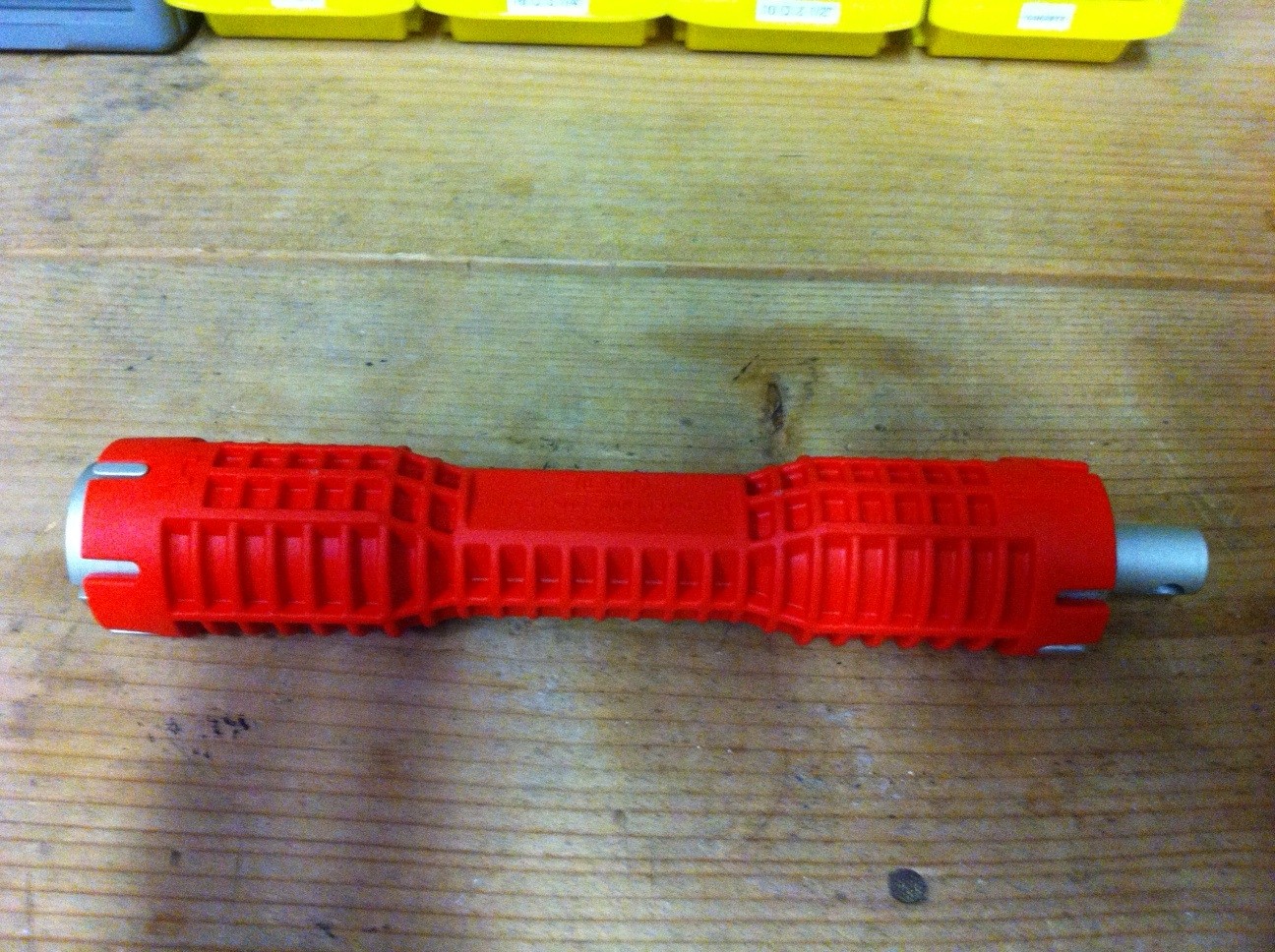

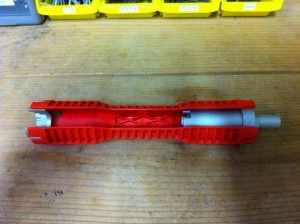
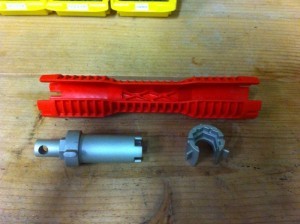
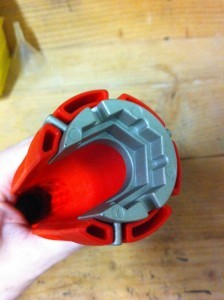

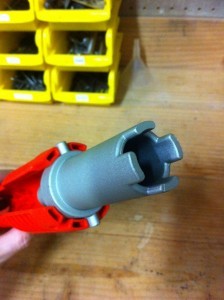
Nice writeup Travis! That is a cool tool!
Yes it is. It’s very versatile. I wish I’d had one years ago.
Great review Travis! Thanks. I have been keeping this junky plastic one that came with my faucet. Rigid is a brand you can really trust. I have to look for it.
I’d be curious to see how the plastic holds up, but that seems to be a convenient little multi-tool
Travis–While this is a good tool in open areas, I needed it to fit under the sink while installing a new faucet set two years ago. I first tried my Ridgid basin wrench; the spring-loaded wrench head was too large, and wouldn’t let me turn it in the space available, as was this tool. I was five minutes into the job of removing the old faucet and was stopped cold. While I was at Sears I realized I needed a tool similar to the basin wrench, but smaller in width, to continue. As I went up and down the aisles, the only thing that came close was a standard crowfoot wrench. I figured that if it was attached to a foot-long extension on a 3/8″ drive ratchet, I’d be home free.
I purchased a set of the crowfoot wrenches and went home. After putting the 7/8″ wrench head on the extension, I got underneath the sink, placed the wrench on the nut and turned; problem solved. As you can probably appreciate, there hasn’t been a use for the crowfoot wrenches since, but that one saved my bacon that day.
These things are great! Used mine to install many faucets. Even if you toss the metal parts, the plastic notches they go into are designed to fit those stupid plastic washers/nuts used to hold cheaper faucets. Just that part is well worth the price! The things the metal parts do is just ok. I prefer my basin wrench and metal strainer wrenches, but these work ok. It’s well worth what ever they are charging!
I was a bit leery of the plastic too, but it is very sturdy. It’s also covered by Ridgid’s Full Lifetime Warranty. I try to include warranty coverage in my reviews, but it slipped my mind.
I always learn something new.
This is a fun and informative read.
I look forward to each issue.
@ Steve R: I can appreciate that indeed. Crowfoot wrenches are the textbook example of that tool that you only use once in a blue moon, but when you need it you NEED IT.
i bought this tool and it was terrible,,,what a waste of money and time